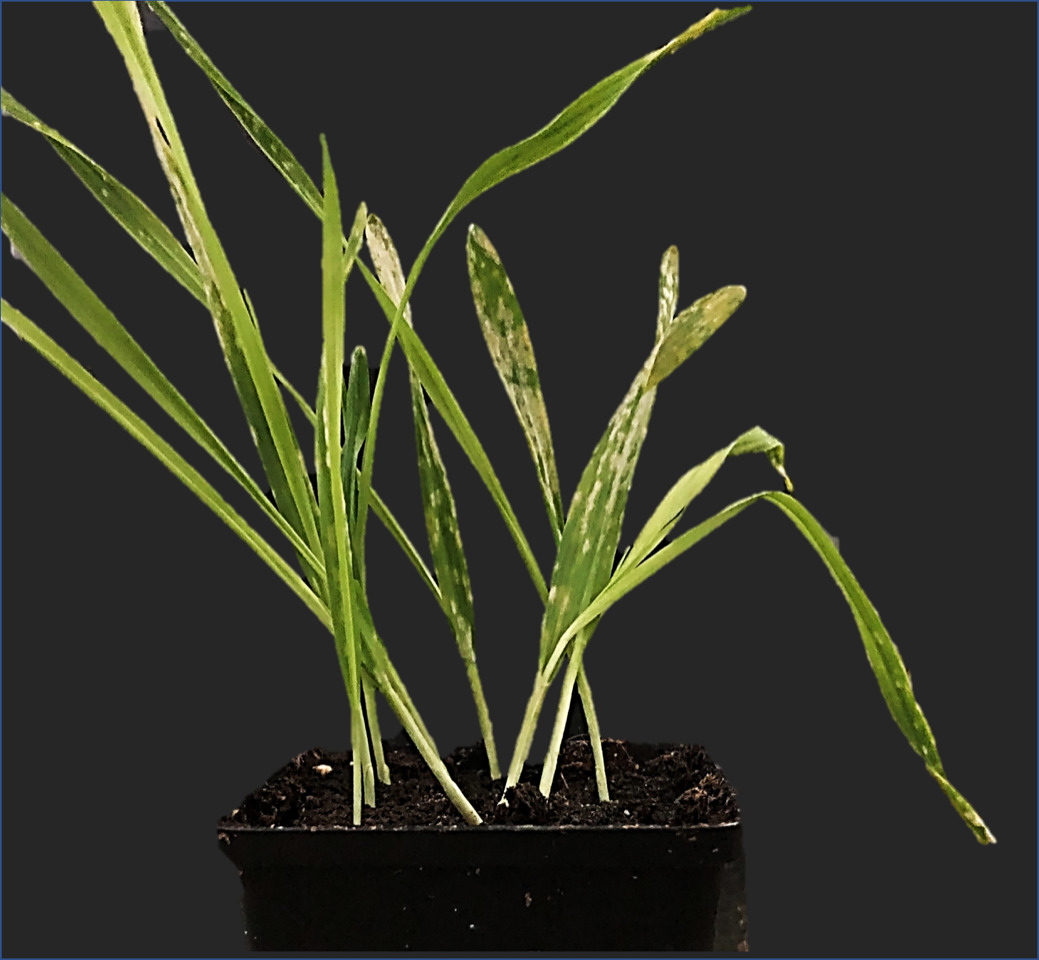Dr. Isabel Saur
Research focus
Our group particularly focuses on the mechanisms employed by the powdery mildew fungus Blumeria graminis forma specialis hordei (Bgh) to colonize barley.
Powdery mildews are obligate biotrophs, meaning that they require living host cells for proliferation. It however appears that during this interaction, the plant can spatially control the infection with the fungus to the leaf surface as Bgh can exclusively infect epidermal leaf cells. For this, Bgh produces specialized infection structures (so-called haustoria) that facilitate the uptake of nutrients from the plant cells and the transport of factors beneficial for fungal proliferation into the plant cells.
The complex nature of this interaction is worth studying for a number of reasons. First, the research goals will assist the protection of economically important cereals such as barley from yield loss as a result of fungal infection. Second, understanding the mechanisms by which Bgh can protect barley leaf cells from cellular collapse and senescence will provide a platform to increase crop yield by prolonging the life cycle of crops. Third, the fungus’ impressive features for the uptake of nutrients from the plant through haustorial feeding structures can provide future insight into the metabolic exchange between plants and their (microbial) environment.

The five most important publications
- Saur IML, Panstruga R, Schulze-Lefert P.* (2021) NOD-like receptor-mediated plant immunity: from structure to cell death. Nature Reviews Immunology 21(5):305-318. doi: 10.1038/s41577-020-00473-z.
- Saur IML*, Hückelhoven R.* (2021) Recognition and defence of plant-infecting fungal pathogens. Humboldt Review - Journal of Plant Physiology 256:153324. doi: 10.1016/j.jplph.2020
- Saur IML*, Bauer S, Lu X, Schulze-Lefert P.* (2019) A cell death assay in barley and wheat protoplasts for identification and validation of matching pathogen AVR effector and plant NLR immune receptors. Plant Methods 24;15:118. doi: 10.1186/s13007-019-0502-0
- Saur IML, Bauer S, Kracher B, Lu X, Franzeskakis L, Müller MC, Sabelleck B, Kümmel F, Panstruga R, Maekawa T, Schulze-Lefert P. (2019) Multiple pairs of allelic MLA immune receptor-powdery mildew AVRA effectors argue for a direct recognition mechanism. Elife 19;8:e44471. doi: 10.7554/eLife.44471
- Lu X, Kracher B, Saur IML, Bauer S, Ellwood SR, Wise R, Yaeno T, Maekawa T, Schulze-Lefert P. (2016) Allelic barley MLA immune receptors recognize sequence-unrelated avirulence effectors of the powdery mildew pathogen. Proceedings of the National Academy of Sciences U S A18;113(42):E6486-E6495. doi: 10.1073/pnas.1612947113
